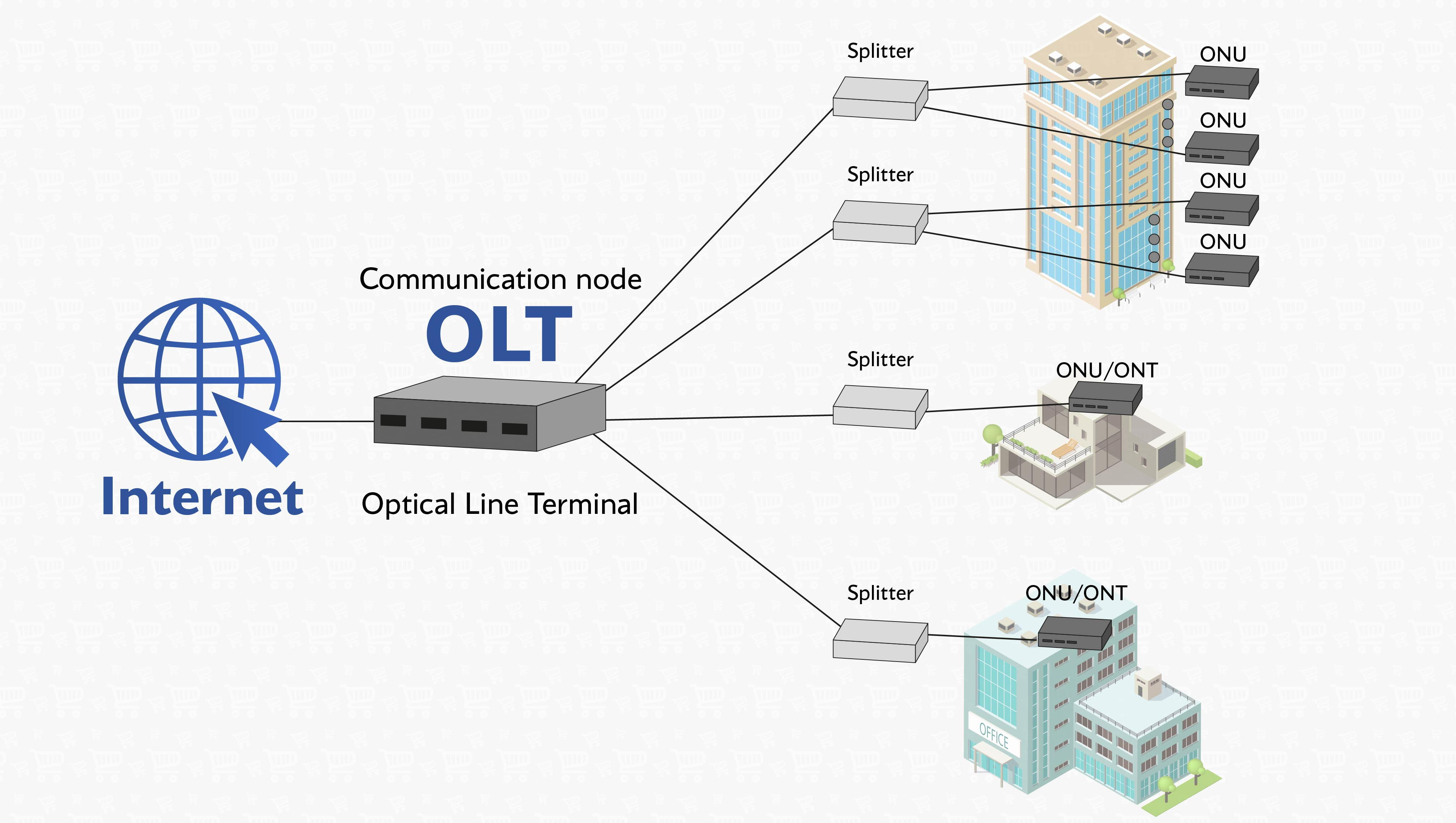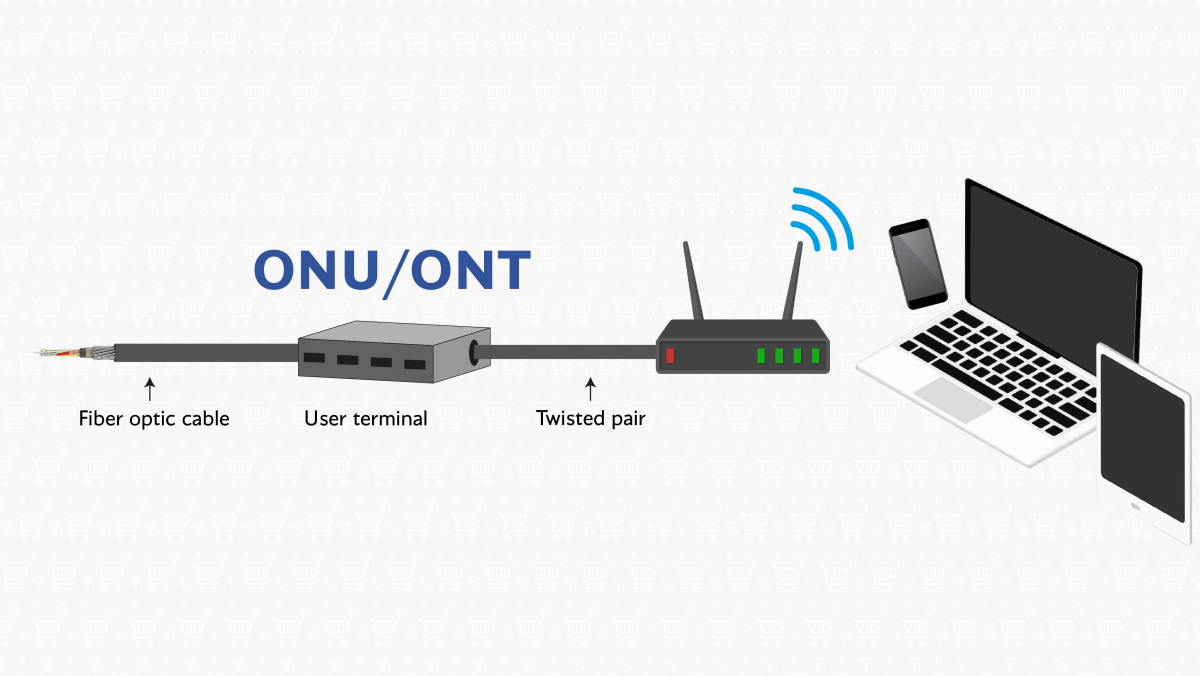Internet without light: GPON technology

During rolling and emergency blackouts, the traditional cable Internet in the vast majority does not work. Also, the load on cellular data networks is increasing, due to which the speed of access to the mobile Internet sags significantly. In order to stay online and not depend on the availability of electricity, you can make a home connection using GPON technology, which is rapidly gaining momentum and is offered by many Internet service providers.
What is GPON technology?
The abbreviation GPON stands for Gigabit Passive Optical Network. Literally, it can be translated as a gigabit passive optical network. The technology works on the principle of subscriber connection with a fiber optic cable directly from the data center without intermediate active equipment. Actually, the passive technology was nicknamed due to the use of optical splitters as intermediate links in the network. These splitters split the light output from the provider's central node and direct the necessary share to the users. Splitters do not perform any work that requires electricity.
In simpler terms, GPON technology connection involves the use of a 100% optical channel from the provider's host to the subscriber's home or office.
 |
| A visual diagram of the wiring of GPON networks using optical splitters as intermediate links in the signal transmission chain. |
The key advantage of the technology is that it is much easier to reserve the equipment of the provider's central nodes in terms of autonomous power supply. Guaranteed power supply of data centers is provided from batteries and is often duplicated by an emergency power system based on powerful generators.
What is GPON for?
The GPON Internet connection service is provided to provide high-speed access to the World Wide Web both in the presence of light and in its absence. Using appropriate network equipment on the subscriber's side, the technology makes it possible to increase the speed of data exchange in the global network by an order of magnitude and not depend on power outages.
What devices are required to connect GPON?
Before connecting GPON, you need to clarify which Internet providers provide such a service. The house must be connected to the network using GPON technology. The next step is to install a fiber optic cable home and install a user terminal to convert the optical signal into an electrical one and vice versa (to send data to the provider's network equipment).
Network terminals ONU (Optical Network Unit) or ONT (Optical Network Terminal) receive a signal from the OLT (Optical Line Terminal) terminal at the provider's central node. Multiple access over a single fiber is provided through time multiplexing and frequency division of the receive/transmit paths.
 |
| To convert an optical signal into an electrical one and vice versa, you will need to acquire an ONU / ONT subscriber terminal. |
To distribute wireless Internet, the subscriber terminal is usually connected with a twisted pair cable to a router. And he, in turn, provides the connection of client devices in the manner of a laptop, smartphone, tablet and other gadgets.
How to power the in-house GPON equipment?
We have already talked in detail about the methods of autonomous power supply for intra-apartment network equipment and computer equipment in the material "How to organize remote work during power outages". But it's not a sin to repeat.
The easiest way is to set up autonomous operation of the ONU / ONT terminal and the router from a portable charging station. Mobile power stations are equipped with many connection ports, one or more 230 V sockets, DC outputs for powering a laptop and other low-power equipment. You can read more about them in the article "Autonomous power supply: what are portable charging stations".
In a country house, they often use the services of backup power generators. However, they need to be refueled, serviced, and properly organized exhaust gases. Especially for the Internet using GPON technology, the use of a generator is impractical.
 |
| You can power the subscriber terminal and the router in a huge variety of ways. |
You can independently assemble an autonomous power supply circuit for network equipment, a couple of laptops and charging mobile gadgets from an auto-inverter and a car battery. How to do this is described in the material "How to choose a car inverter for creating autonomous battery power systems".
Finally, the user terminal and router can be safely powered from a UPS or a Power bank battery. To implement the latter option in practice, you will need to acquire special cables with a built-in voltage converter or Quick charge trigger. Such devices increase the output voltage from standard 5 V to 9 V or 12 V. They are available both as a solution built into the cable, and as separate boards with connectors for connecting power wires.
 |
| There are many separate triggers for increasing voltage, as well as a lot of options built into the cable. |
There are many ways to organize backup power for equipment. Choose the most suitable in spirit and financial capabilities.
How is GPON different from Ethernet?
The advantage of GPON over a traditional Ethernet connection is that optical splitters do not require special maintenance and do not require power supply. In addition, signal transmission without much loss is possible over distances of the order of 20 km. Whereas Ethernet networks are built according to a different principle: a fiber optic line from the provider is brought into a multi-storey building and connected to a switch, from which the Internet is distributed to apartments via twisted pair cables. The weak point in this chain is the switch, which requires power to operate.
 |
| Intra-house equipment with a traditional Ethernet connection needs active power, while the Internet using GPON technology does without it. |
Of course, residents of high-rise buildings can chip in for the installation of a backup power source on their own, since for any provider the equipment of each in-house node with autonomous power supply systems will be very expensive. With the Internet using GPON technology, there is no need for this - it is enough for the provider to establish emergency power only for the central communication centers where OLT terminals are installed.
What is the speed of the Internet using GPON technology?
The work of GPON is regulated by the G.984 standard. From an Internet connection using this technology, you can squeeze the maximum theoretical speed up to 2488 Mbps for receiving data and up to 1244 Mbps for sending information in the direction from the subscriber. In practice, providers usually provide packages with lower speeds: 1 Gb / s, 500 Mb / s, 100 Mb / s, etc. The higher the declared bandwidth, the more expensive the subscription fee for using the Internet. Note that it is necessary to select the appropriate package based on the characteristics of the home wireless router - if the router is equipped with an incoming WAN port with a maximum connection speed of up to 100 Mbps, then it makes sense to connect gigabit Internet using GPON technology only with an eye to the prospect of replacing the router with a faster one. .
_____
GPON technology will serve as a lifesaver for Internet users during regular blackouts. But only with the provision of backup power for network subscriber equipment and the competent organization of autonomous power supply of central communication nodes by the Internet service provider.
Articles, reviews, useful tips
All materials




















































